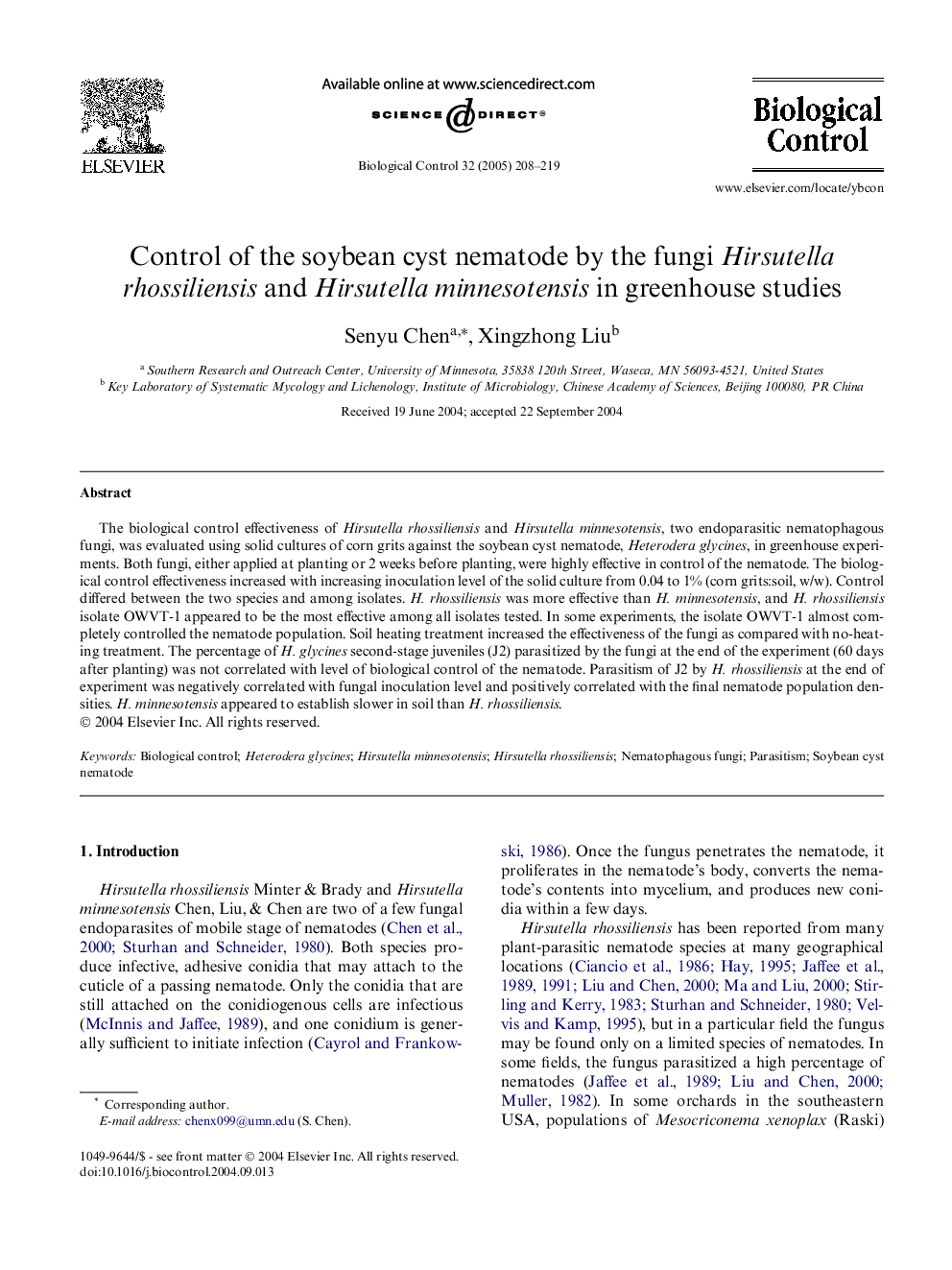| Article ID | Journal | Published Year | Pages | File Type |
|---|---|---|---|---|
| 9472034 | Biological Control | 2005 | 12 Pages |
Abstract
The biological control effectiveness of Hirsutella rhossiliensis and Hirsutella minnesotensis, two endoparasitic nematophagous fungi, was evaluated using solid cultures of corn grits against the soybean cyst nematode, Heterodera glycines, in greenhouse experiments. Both fungi, either applied at planting or 2 weeks before planting, were highly effective in control of the nematode. The biological control effectiveness increased with increasing inoculation level of the solid culture from 0.04 to 1% (corn grits:soil, w/w). Control differed between the two species and among isolates. H. rhossiliensis was more effective than H. minnesotensis, and H. rhossiliensis isolate OWVT-1 appeared to be the most effective among all isolates tested. In some experiments, the isolate OWVT-1 almost completely controlled the nematode population. Soil heating treatment increased the effectiveness of the fungi as compared with no-heating treatment. The percentage of H. glycines second-stage juveniles (J2) parasitized by the fungi at the end of the experiment (60 days after planting) was not correlated with level of biological control of the nematode. Parasitism of J2 by H. rhossiliensis at the end of experiment was negatively correlated with fungal inoculation level and positively correlated with the final nematode population densities. H. minnesotensis appeared to establish slower in soil than H. rhossiliensis.
Keywords
Related Topics
Life Sciences
Agricultural and Biological Sciences
Agronomy and Crop Science
Authors
Senyu Chen, Xingzhong Liu,
